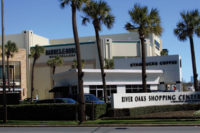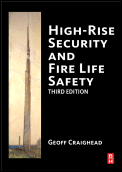Understanding the Consequences of Skipping Fire Suppression
Having smoke and fire detectors without fire suppression technology is like having video surveillance without alarm response.








A fire in 2013 that began in the attic of a Colorado sorority house burned for hours before anyone detected it, resulting in a million-dollar loss. Why? The three-story, wood-frame house had no fire detection system, and a sprinkler system covered the living spaces but not the attic.
In 2007, a college dormitory in Rhode Island suffered a total loss when a fire in an attached garage spread quickly. The eight-unit building was protected by a hardwired smoke detection system, but there were no sprinklers. The building, valued at $500,000 with contents of $150,000, was a total loss, and two civilians and three firefighters suffered non-life threatening injuries.
In 2007-2011, U.S. fire departments responded to an estimated annual average of 3,810 structure fires in dormitories, fraternities, sororities and barracks, and those fires caused an annual average of two civilian deaths, 30 civilian injuries and $9 million in direct property damage, according to a report from the National Fire Protection Agency (NFPA).
Since 1980, structure fires in these types of residences have increased 18 percent, however, Marty Ahrens, Senior Manager, Fire Analysis Services for the NFPA, says that the increase in fires reported could be due to improvements in fire reporting.
“Today, we have better notification through automatic fire alarms and smoke detection systems – when an alarm is set off, the fire department is notified immediately,” she says. Plus, updates to the National Fire Incident Reporting System (NFIRS, version 5.0) makes “cooking fire confined to origin” easier to document on reports, leading to more detailed reporting and fewer “undefined” fires, she adds.
Also contributing to the increase in fires, she notes, is the evolution of the definition of a dorm.
“Previously, a dorm was basically a building of bedrooms. Now, many are more like apartments, with kitchens, suites, microwaves, etcetera. This blurs the line of what is an apartment and what is a dorm,” she says.
More than two-thirds (70 percent) of fires on these properties began in the kitchen or cooking area, although seven percent of fires started in the bedroom. Those bedroom fires, however, are responsible for 27 percent of injuries and 21 percent of property damage. According to Ahrens, residents face injury while leaving fires (candles) or cooking implements unattended, often within their living space, but many injuries are minor (smoke inhalation).
September and October are peak months for dorm fires, and weekends typically bring more risk than weekdays – 33 percent of fires occurred on Saturdays and Sundays. Unlike home fires, the peak time for dormitory fires is between 5 p.m. and 11 p.m., compared to 5 p.m. to 8 p.m. for typical residences.
Automatic suppression equipment typically lowers damage created by student residence fires. During 2007-2011, 95 percent of automatic suppression equipment present in structure fires were sprinklers, and when wet pipe sprinklers were present in these properties, damage was 65 percent lower than when no automatic extinguishing equipment was present. In the same time period, 57 percent of structure fires in these properties occurred in structures with automatic suppression equipment present, the report notes.
In addition to proper fire suppression equipment and systems, the NFPA also recommends a campus safety outreach program, which could include a targeted focus on fire prevention during September and October, especially with the influx of new students to a college campus.
Fire & Life Safety Solutions
Integrates into Conventional Security and Fire Panels From System Sensor
This low-voltage, system-connected, combination smoke and carbon monoxide detection solution can integrate into conventional security and fire panel to provide a comprehensive life safety solution. Available in two-wire and four-wire versions, the series features photoelectric smoke and electrochemical CO sensing technologies, and the integration module simplifies installation. Since the module sits next to the panel, the system uses approximately 75-percent fewer wires, which translates into lower installation cost and time without sacrificing performance. The module is compatible with smoke detectors with thermal sensors and built-in sounders, designed for both new installations and retrofits.
Find out more at systemsensor.com/i4
Cuts Costs on Wiring, Enables Repositioning From Napco Security
This integrated commercial system offers fast, cost-effective installation options with Quick-Start programming and Auto-Learn/Device Discovery modes, plus, a wireless version enables enterprise security leaders to reduce infrastructure costs and install updated fire and life safety systems in retrofit buildings. Wireless devices can also be removed and repositioned if the needs of the enterprise change. Integrations options include add-on access and badging modules, and even a special snow-day feature for schools.
Find out more at www.napcosecurity.com
Designed for Sprinkler Monitoring Applications From Potter Signal
This fire alarm panel was created to handle flow, pressure and tamper switch notifications, and it can synchronize A/V devices from multiple manufacturers for a robust, multi-system fire and life safety program. The small, inexpensive and robust panel has a 1.0 amp power supply that charges the batteries and powers a notification appliance circuit plus auxiliary power. In addition to communicating over IP right out of the box, the panel can also send emails with status updates or to download configuration files. Emails can also drive service and revenue with reminders that inspections or tests are due.
Find out more at www.pottersignal.com
Looking for a reprint of this article?
From high-res PDFs to custom plaques, order your copy today!










